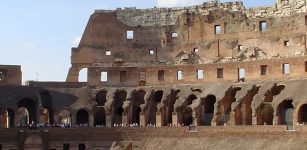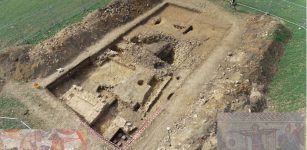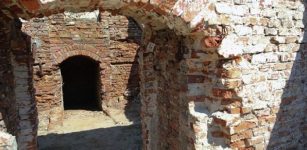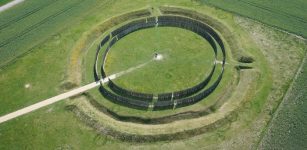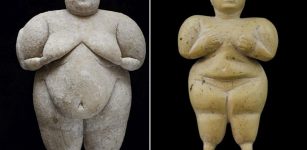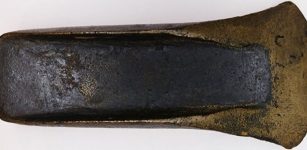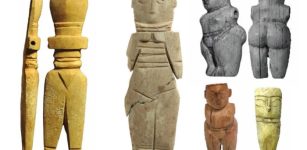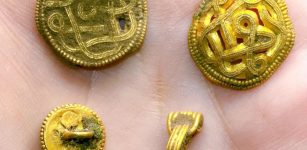Violent Steppe Invasion In Iberia Peninsula Theory Challenged By Archaeologists
Conny Waters - AncientPages.com - Archaeologists present compelling evidence challenging the long-held theory of a violent Steppe invasion in the Iberian Peninsula. Their findings suggest a more nuanced understanding of historical events, urging us to reconsider and refine our perspectives on this significant period.
A study conducted by the Universitat Autònoma de Barcelona (UAB) and the University of Murcia (UM) challenges the prevailing theory that warrior groups with a "Steppe" genetic component from Eastern Europe violently replaced the male population of the Iberian Peninsula approximately 4,200 years ago. Instead, it presents an alternative scenario where groups with Steppe ancestry intermingled with other demographically weakened local populations.
Left Tomb 80 of La Almoloya (Pliego Murcia). Example of a typical burial from the Argaric Bronze Age. Right: he archaeological site of Gatas (Turre, Almería), where one of the oldest known Argaric tombs was found. Credit: ASOME-UAB
Published in the Journal of Archaeological Science: Reports, this research investigates societal and demographic changes in southeast Spain during the transition from the Copper to the Bronze Age. The focus is on a well-documented aspect of this period: the shift from communal burials characteristic of the Copper Age to individual and double tombs associated with Bronze Age El Argar society. The team analyzed a substantial sample of radiocarbon (C-14) dates obtained from human bones found in these various grave types.
The initial result is chronological, indicating that this transition from communal to individual tombs occurred rapidly. However, their second finding holds greater significance. By examining an extensive collection of radiocarbon dates from human remains in southeast Iberia, they identified a peak in burial numbers between 2550-2400 B.C, followed by a precipitous decline between 2300-2250 B.C.
The authors interpret this data from a demographic perspective. "It is likely that the inhabitants of southeastern Iberia were already very few, around 4,300 or 4,200 years ago, just before the arrival of populations with new genetic components, labeled 'Steppe.' When individuals with Steppe ancestry were found in southeastern Iberia, around 2200-2000 BC, they simply mixed with small local groups or occupied uninhabited areas," says Rafael Micó, professor at the UAB and co-director of the Mediterranean Social Archaeoecology Research Group (ASOME-UAB), which carried out the study.
In addition to these findings, the team references prior archaeogenetic studies that indicate the lack of a "male bias" among peninsular populations with Steppe ancestry.
"This allows us to propose a different historical scenario, which does not contemplate invading hordes of Steppe warriors who would have annihilated the local men and formed a male elite with exclusive access to local women," says Cristina Rihuete Herrada, also professor at the UAB and co-author of the study.
Around 4,200 years ago, between the Late Copper Age and the Early Bronze Age, major social disruptions occurred in Central and Western Europe. Archaeologists are still debating over their exact sources, and explanations range from drought to large-scale violent migrations or the spread of contagious diseases.
"In recent years it has been argued that populations with what is known as 'Steppe ancestry' migrated westwards from the region around the Black Sea, aided by the horse and wheel as new technologies, and brutally raided Western Europe," explains Camila Oliart, UAB researcher and co-author of the study.
"In the case of Iberia, it has been suggested that men arriving from the East had preferential access to women and discriminated or eliminated local males, in what is a very impactful 'invasionist' interpretation in the media, but perhaps also a too hasty one."
A recent study suggests that the transition between the Chalcolithic and Bronze Age in southern Iberia, around 4,200 years ago, especially in the southeast region, was gradual. The period leading up to this transition saw smaller settlements and low population density. Therefore, the Copper Age's collapse wasn't a rapid event for a densely populated society but a result of declining local dynamics over two centuries. The study also dispels theories of mass elimination or subjugation following conquest.
"The inhabitants of southern Iberia were already few in number at the end of the Copper Age and mixed with groups of Steppe genetic ancestry without the need for a large-scale invasion. We should start to consider alternative explanations," suggests Miguel Valério, UAB researcher and co-author of the study. "We cannot ignore the fact that violence was an ingredient of social life in the Copper Age, but so far nothing proves that its end was the consequence of a generalized conflict between genetically distinct populations."
See also: More Archaeology News
Still, the team emphasizes that more high-precision radiocarbon dating and genetic analysis on human samples from the latest Copper Age and the earliest Bronze Age (El Argar) burials are needed.
"Such data is absolutely crucial to gain a better understanding of the nature, scale and pace of the changes taking place in the formation of Bronze Age societies," they concluded.
The study was published in the Journal of Archaeological Science: Reports
Written by Conny Waters - AncientPages.com Staff Writer


